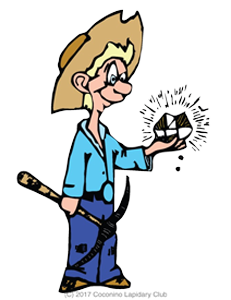In this blog post I’ll talk about the ore minerals of copper in Porphyry Copper deposits; major sources of copper; Porphyry Copper Deposits in Arizona; the formation and geology of Porphyry Copper deposits; and am including a gallery of Copper ore minerals; and lastly, discuss Peacock Copper Ore.
Porphyry Copper Deposits
Porphyry Copper deposits are the world’s largest source of copper [Ref 1] and are distributed globally (Figure 1).

World wide, production by the ten largest producers amounted to 15.4 million tons in 1917 [Ref 2]; of these, the United States ranked fourth in production at 1.27 million tons, of which 68% was produced by mines in Arizona [Ref 3].
Numerous deposits are located in the geological Basin and Range Province of the Southwest, as shown in Figure 2. Among the currently active mines in Arizona are those operated by Freeport-McMoRan Inc, the Morenci, Bagdad, Safford, Sierrita and Miami mines [Ref 4] and those operated by ASARCO LLC, which are the Silver Bell, Mission complex mines, and the Ray complex mines [Ref 5].

Formation of Porphyry Copper Deposits and Ore Minerals
The ore bodies of Porphyry Copper deposits are formed by the intrusion of hydrothermal fluids emanating from a magma chamber several kilometers below the earth’s surface and the deposition of ore minerals as veins in pressure-induced fractures within a granitic porphyry (See figures and text in Ref 6). Chalcopyrite is the major copper mineral deposited [Ref 7, Page 4]. This initial mineralization results in grades of 0.3 to 0.9% copper and almost always less than 1% [Ref 6]. It is by Supergene Enrichment (Slides 6, 7, 8 in Ref 8], a secondary enrichment process, that the deposition and the accumulation of copper ore minerals above and below the water table increases the ore grade. As shown in Slide 8 of [Ref 9], oxidizing conditions in the ore body above the water table result in deposition of copper minerals such as azurite, malachite, and chrysocolla, and the sulfide minerals, chalcocite and bornite, form under a lesser concentration of oxygen below the water table.
The Ore Minerals













Peacock Ore
Many young mineral collectors, drawn by the brilliant spectrum of colors on their surfaces, have collected specimens of either oxidized Chalcopyrite or Bornite (Figures 10 and 12); these specimens typically are labeled as “Peacock Ore” or ‘Peacock Copper”. The color stems from a thin film formed by the oxidation of the mineral surface. The colors are caused by an optical effect due to light waves reflected by both the underlying surface of the mineral and the surface of the film, which reinforce each other. Reinforcement of the waves depends on the thickness of the film and the wavelength of the light [Ref 8, Equation 4(41)]. In thinner film the reflected light tends to the blue end of the spectrum and in thicker film, to the red end of the visible light spectrum [Ref 8, Equation 4(41)]. The copper sulfides Chalcocite and Covellite can also demonstrate blue to red reflections as seen in Figures 5 and 6.
Reference 1. https://www.geologyforinvestors.com/porphyry-largest-source-copper/
Reference 2. https://investingnews.com/daily/resource-investing/base-metals-investing/copper-investing/copper-production-country/
Reference 3. http://azgs.arizona.edu/minerals/king-copper
Reference 4. https://www.fcx.com/operations/north-america
Reference 5. http://www.asarco.com/about-us/
Reference 6. https://www.911metallurgist.com/blog/geology-of-porphyry-copper-deposits
Reference 8. https://www.slideshare.net/hzharraz/topic-9-supergene-enrichment
Reference 9. http://pages.physics.cornell.edu/p510/w/images/p510/1/14/Ss14_heavens.pdf
